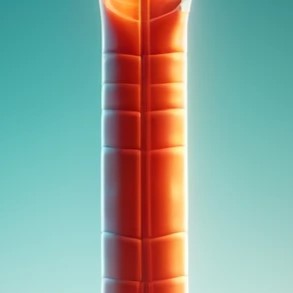
How Often to Survey?
The current guidelines from the British Society of Gastroenterology make a series of recommendations
The guidelines divide sufferers into those with
- ‘short segment’ Barrett’s (SSBE), where it is less than 3cm long and
- ‘long segment’ Barrett’s (LSBE) which is more than 3 cm long.
For patients with short segment Barrett’s, they sub-divide into
- people with intestinal metaplasia
- people without intestinal metaplasia
(They do not divide people with long segment because intestinal metaplasia is present in almost everyone with long segment Barrett’s).
Recommended Surveillance Intervals
Short Segment Barrett’s Oesophagus, no intestinal metaplasia
- Repeat the endoscopy to confirm the diagnosis
- Discharge from follow up as the cancer risk is so small that the risks of doing repeated endoscopy outweighs the risk of getting cancer
Short Segment Barrett’s Oesophagus, with intestinal metaplasia
Regular surveillance endoscopy every 3 to 5 years
Long Segment Barrett’s oesophagus
- Regular surveillance endoscopy every 2 to 3 years
Who should do the endoscopy procedures?
All gastroenterologists are trained to do endoscopy to a high standard. So are nurse endoscopists. So, surely anyone can do this well?
In our experience is that this is simply not true. Endoscopic surveillance of Barrett’s oesophagus is a specialist procedure. Many general endoscopists do not do it particularly well, either because they have not had enough specialist training or because they lack experience.
Common mistakes made at endoscopy include:
- Not identifying the Barrett’s oesophagus correctly
- Not taking the right number of biopsies
- Not working with specialist pathologists
How Should Barrett’s Endoscopy be Done?
High quality surveillance requires all of the following:
- Familiarity with Barrett’s
- Someone who sees lots of cases is more likely to detect subtle abnormalities
- The latest endoscopy equipment
- Pre-cancerous changes can be hard to see. The better the technology used, the more likely tiny abnormalities will be detected.
- Remember, tiny abnormalities today can become much larger abnormalities in a few months time
- Rigorous biopsy protocols – most endoscopists do not take many biopsy samples.
- There is excellent evidence that the more biopsies the doctor takes, the more likely they are to find early abnormalities such as dysplasia
- If you are not sure, ask your doctor whether they take quadrantic biopsies (one biopsy in each quarter of the clock face) every 1 or 2 cm throughout the entire length of the Barrett’s
- Another way of asking this is “How long is my Barrett’s?”
- Multiply the answer in your head by 2. So if the Barrett’s is 5cm long, the answer is 10
-
- Then ask how many biopsy samples the doctor expects to take? If it is less than 10, the doctor is not following the best guidance.
-
- Advanced Endoscopic Techniques
- There are a number of enhancements to a standard endoscopy procedure that can help the doctor identify pre-cancerous abnormalities.
Discover more from reviewer4you.com
Subscribe to get the latest posts to your email.





